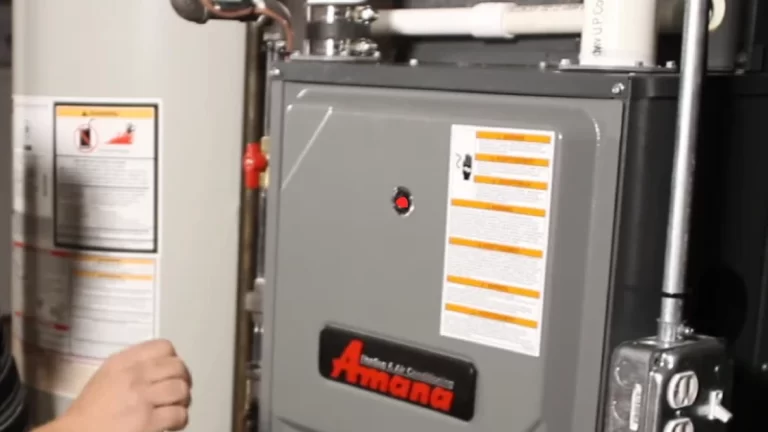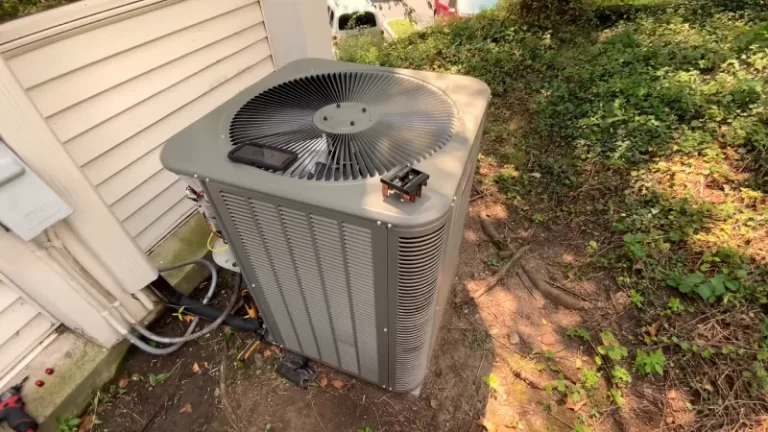Black Residue on Plastic? Uncover the Grimy Cause Now!
You’ve seen it before. A mysterious, grimy black residue clinging stubbornly to plastic surfaces around your home. It appears on window frames, kitchen appliances, electronics, and even children’s toys, resisting a simple wipe-down. This isn’t your average household dust; it’s a persistent film that seems to appear out of nowhere, leaving you wondering about its origin and potential harm.
Many homeowners are baffled by this grimy buildup. You clean it off, and within a few weeks, it’s back. This frustrating cycle happens because the root cause hasn’t been addressed. The truth is, this black residue is often a sign of underlying issues within your home’s environment that need your attention.
You'll Learn About
The Primary Culprit: What Is This Black Stuff?
In most cases, the black residue you’re seeing is a form of soot—fine, black particles composed primarily of carbon. These particles are the byproduct of incomplete combustion, meaning something in or near your home is burning fuel inefficiently. When fuels like wax, oil, natural gas, or wood don’t burn completely, they release these tiny carbon particles into the air.
Plastics are particularly prone to collecting this airborne soot. This is due to a phenomenon known as electrostatic attraction. Plastic surfaces can develop a static charge that acts like a magnet for tiny airborne particles, pulling them out of the air and causing them to accumulate on the surface.
Top 7 Causes of Black Residue on Your Plastic Surfaces
To permanently solve the black residue problem, you first need to identify the source. The culprit is often an everyday item or a hidden issue you might not suspect. Here are the most common causes of black soot and residue on plastic surfaces in your home.
1. Candle Soot: The Hidden Air Polluter in Your Home
One of the most frequent sources of indoor soot is scented paraffin wax candles. While they create a cozy ambiance, these candles are notorious for producing fine black soot, especially if not maintained properly. The oils that create the pleasant fragrance often don’t burn cleanly, releasing soot into the air.
A key indicator of a sooty candle is a long, untrimmed wick, which leads to a larger, flickering flame and incomplete combustion. To minimize this, always trim the wick to about ¼ inch before each use and avoid placing candles in drafty areas, which can cause the flame to burn unevenly.
2. Furnace and Fireplace Issues (Carbon Ghosting)
If you notice black streaks on walls that seem to outline the studs, a phenomenon known as “ghosting” or “thermal tracking,” your HVAC system or fireplace could be the source. A malfunctioning furnace, a poorly ventilated gas appliance, or a wood-burning fireplace can release significant amounts of soot into your home.
This is a serious concern that goes beyond cleanliness. A sooty furnace can be a sign of improper combustion, which may also indicate a risk of carbon monoxide leakage. If you suspect your heating system is the cause, it’s crucial to have it inspected by a professional immediately.
3. Degraded Materials: When Plastics and Rubbers Break Down
Sometimes, the black residue isn’t from the air at all but from the plastic item itself or materials around it. Over time, rubber components, such as the feet on electronics or seals on appliances, can degrade. This process causes them to become soft and leave behind a black, often sticky, residue.
Another related issue is plasticizer migration. Plasticizers are chemicals added to plastic to make it flexible. As the plastic ages, these chemicals can leach to the surface, creating a sticky film that attracts and traps dust, dirt, and soot, eventually appearing as a dark layer.
4. Outdoor Pollutants Sneaking In
Your indoor air quality is heavily influenced by the environment outside. If you live in an urban area, near a busy road, or in an industrial zone, outdoor pollutants can easily find their way into your home. Soot from vehicle exhaust and industrial processes can enter through open windows, doors, and ventilation systems.
This type of residue is often most noticeable on window sills and frames. Sealing air leaks around windows and doors can help reduce the amount of outdoor pollution that enters your home.
5. Kitchen Grease and Cooking Fumes
The kitchen is a prime location for stubborn black residue, especially on plastic appliances like microwaves, coffee makers, and food processors. When you cook, particularly when frying or sautéing, tiny droplets of grease become airborne. These grease particles then settle on various surfaces.
This sticky layer of grease is a magnet for dust and other airborne particles. Over time, this mixture of grease and dirt builds up into a dark, grimy film that is very difficult to clean. Using an exhaust fan every time you cook can significantly reduce this issue.
6. Black Mold and Mildew
While soot is the most common cause, it’s important not to confuse it with black mold. Mold is a fungus that thrives in damp, humid environments. If the black residue is concentrated in areas with high moisture, like bathrooms or around leaky windows, it could be mold.
You can often distinguish mold from soot by its appearance and smell. Mold may appear fuzzy or patterned and is often accompanied by a musty odor. Soot, on the other hand, is typically powdery or greasy and odorless. Addressing moisture issues is critical for mold remediation; for instance, ensuring you have a clean basement apartment free of dampness is a key preventative step.
7. Household Appliances and Electronics
Certain electronics and appliances can generate their own black dust. The internal components of devices with fans or moving parts, like computers or air purifiers, can wear down over time, creating fine black particles. For example, a deteriorating belt in a vacuum cleaner or a malfunctioning fan can shed black dust.
Regularly cleaning and maintaining your appliances is key. This includes cleaning filters in air purifiers and HVAC systems and checking electronics for any signs of internal wear and tear.
Pinpointing the Cause: A Step-by-Step Diagnostic
Not sure which of these culprits is to blame for the black residue in your home? The texture, location, and smell of the residue can provide valuable clues. Use the table below to help diagnose the problem and determine the most likely source.
| Residue Characteristic | Potential Cause | Common Locations |
|---|---|---|
| Dry, Powdery, Smears Easily | Soot (from candles, furnace, fireplace) | Walls near ceilings, around vents, on electronics |
| Sticky, Greasy, Hard to Wipe | Kitchen Grease or Plasticizer Migration | Kitchen appliances, cabinets, older electronics |
| Spotty, Sometimes Fuzzy, Musty Smell | Mold or Mildew | Bathrooms, window sills, basements, damp areas |
| Gritty, Concentrated on Window Sills | Outdoor Pollutants | Window frames, near doors |
| Localized Around a Specific Device | Degraded Rubber or Appliance Wear | Underneath electronics, appliance seals |
Your Action Plan: How to Effectively Clean Black Residue
Once you’ve identified the likely cause, it’s time to clean up the existing residue and take steps to prevent its return. The cleaning method you choose will depend on the type of residue you’re dealing with.
For Dry Soot and Dust
For powdery soot, it’s best to start with a dry cleaning method to avoid smearing the fine particles. Begin by using the brush attachment on your vacuum cleaner to lift away as much of the loose soot as possible. Follow up with a dry microfiber cloth or a specialized soot-removing sponge.
After removing the bulk of the dry residue, you can tackle any remaining stains with a gentle cleaning solution. A simple mixture of mild dish soap and warm water applied with a soft cloth is usually effective. Always wipe gently to avoid driving the stain deeper into the plastic.

For Sticky, Greasy, or Oily Residue
Sticky residue requires a degreasing agent. You can start with a natural solution by mixing equal parts white vinegar and warm water in a spray bottle. Spray the solution on the surface, let it sit for a few minutes to break down the grease, and then wipe it away with a clean cloth.
For more stubborn, built-up grease, you may need a commercial degreaser. When using any new cleaning product, always test it on a small, inconspicuous area first to ensure it doesn’t damage or discolor the plastic surface.
For Stubborn Stains and Degraded Plastic
If you’re dealing with residue from degraded plastic or rubber, cleaning can be more challenging. A paste made from baking soda and water can provide gentle abrasion to scrub away the sticky layer without scratching the plastic. Apply the paste, let it sit for a few minutes, and then gently scrub with a soft cloth or sponge.
For very persistent sticky residue, isopropyl alcohol can be effective. However, use it with caution, as alcohol can damage certain types of plastics. Dab a small amount onto a cotton ball, test it in a hidden spot, and if it’s safe, gently rub away the stickiness.
Tackling Black Mold
If you’ve identified the residue as mold, safety is paramount. Wear gloves and a mask to avoid inhaling spores. For non-porous plastic surfaces, a solution of white vinegar or a 3% hydrogen peroxide solution can be used to kill the mold. Spray it on, let it sit for at least 10 minutes, and then scrub the area clean.
Simply cleaning the mold is not enough. You must address the source of the moisture that allowed it to grow in the first place. This could involve fixing leaks, improving ventilation, or using a dehumidifier. During larger home projects to fix moisture issues, you might encounter old building materials. It’s important to handle these correctly, especially when installing vinyl plank flooring over old glue, as improper removal techniques can release unwanted compounds into the air.
Prevention Is Key: Keeping Your Plastics Clean for Good
Cleaning the black residue is only half the battle. To prevent it from coming back, you need to address the root cause. Here are some effective preventative strategies to maintain a cleaner, healthier home.
Start by improving your indoor air quality. Change your HVAC filters regularly, opting for high-efficiency filters designed to capture smaller particles. Consider using an air purifier in commonly used rooms to further reduce airborne particulates.
Be mindful of combustion sources in your home. If you enjoy candles, switch to cleaner-burning options like soy or beeswax, and always keep the wicks trimmed. Ensure your kitchen is well-ventilated by using the exhaust fan every time you cook, and schedule regular professional maintenance for your furnace and fireplace.
Finally, make regular cleaning a habit. Wiping down plastic surfaces frequently prevents the slow buildup of grease, dust, and soot. By staying proactive, you can keep the mysterious black residue at bay and ensure your home remains clean and healthy.



